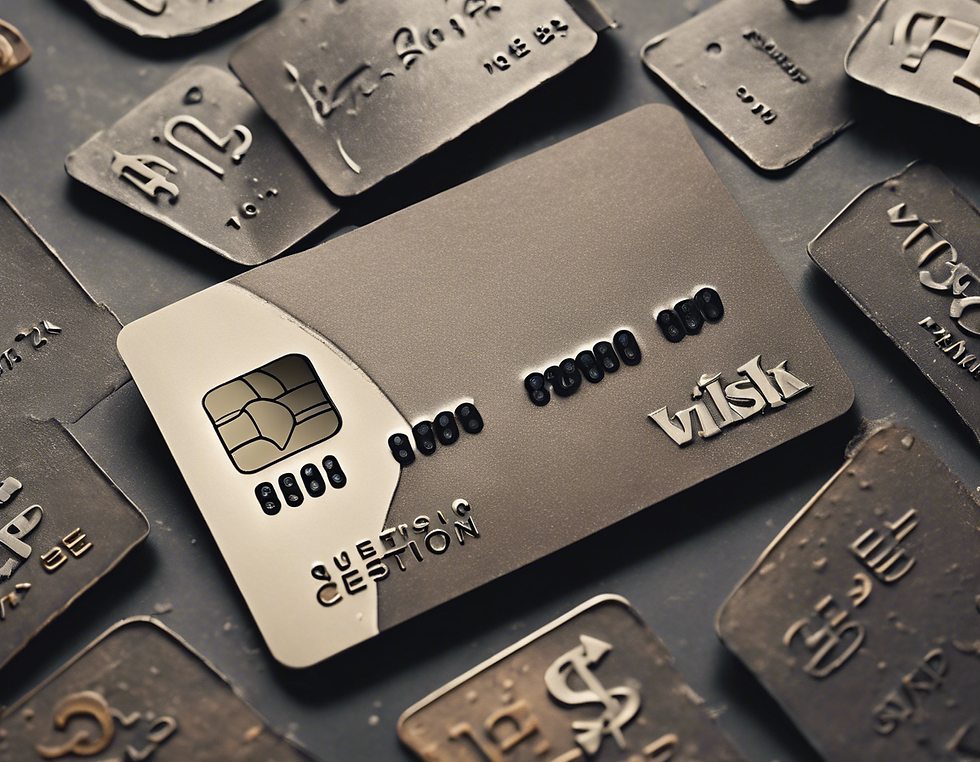Demystifying Credit Card Risks: What You Need to Know
- Maria Isabel 北科大-
- Jun 19, 2024
- 3 min read
Credit cards have become an integral part of modern financial transactions, offering convenience and flexibility to users. However, with great convenience comes great responsibility, as credit cards also pose certain risks that users need to be aware of. Understanding these risks and knowing how to mitigate them is crucial for maintaining financial security.

Is physical credit card or mobile credit card safer?
A virtual credit card is a card that's created digitally and has a unique, one-time number that's different from the one on your physical card. This feature safeguards you against fraud and scams when making online purchases, as merchants don't have access to your real credit card information. You also have the option to lock or delete virtual cards at any point without impacting your real credit card account.
Many credit card card providers offer virtual cards through their online platform. You can
easily request a virtual credit card and set rules around where it can be used and its spending limits. However, note that virtual cards can’t be used for all purchases. They’re designed to be used for online transactions, over the phone, or at select physical stores that support contactless payments like Apple Pay or Google Pay.
Virtual cards offer a layer of security compared to physical cards because they protect your real credit card information. This makes them safer than physical cards in several respects:
● Virtual credit cards can be restricted to specific merchants and limited to certain spending
limits. They can also be programmed for single use, automatically deactivating after the first
transaction. These rules offer extra fraud protection compared to a regular credit card.
● Unlike physical credit cards, virtual cards can’t be stolen or lost. If you carry a physical credit
card and it’s stolen, you can be vulnerable to fraud. Virtual cards live in your digital wallet,
keeping you safe from fraudsters.
● Virtual credit cards must comply with the Payment Card Industry Data Security Standard
(PCI DSS), which contains regulations and guidelines designed to safeguard credit and debit
transactions and prevent the misuse of cardholder information.
Virtual credit cards offer many advantages, but they have a few downsides. Here are some of the pros and cons of virtual cards:
Pros:
● Improved security: Using virtual cards while making online purchases protects your actual
credit card details and offers an extra layer of security compared to physical credit cards.
● Flexibility: You have the option to set custom spending limits, choose specific vendors where
the card can be used, and set expiry dates–without affecting your real credit card.
● Convenience: Virtual credit cards are generated instantaneously and can be used right away
for online purchases and contactless payments.
Cons:
● Can’t always use them in-store: Not all stores offer contactless payments like Google Pay or
Apple Pay. While virtual cards are ideal for online shopping, you may be limited when it
comes to in-store retailers.
● Refunds may be complicated: Each store has its own policies, and some may only offer
refunds through the initial payment method. This could be an issue if you used a virtual credit
card number that is now inactive. In this case, you might receive store credit, a check, or a gift
card instead.
● Not ideal for reservations: When you make a hotel reservation with a virtual card, it can be
difficult to match your payment method during check-in. Hotels typically require a physical
card upon arrival, so using a virtual card may require additional confirmation, like contacting
your bank.
Conclusion : I still recommend other people to use virtual credit cards rather than physical credits because virtual ones have more improved security, flexibility, and convenience. but at the same times we still have to be careful when using virtual credit cards.



Comments